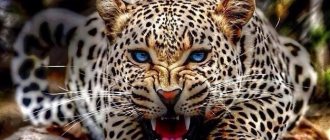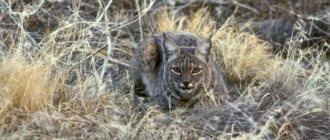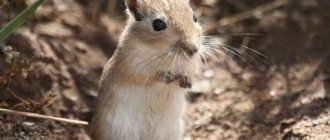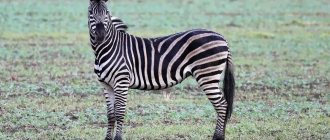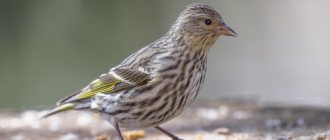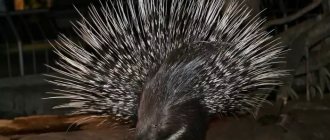Species and man
The red fox is very widespread, found in many countries, has a bright appearance and, of course, is not deprived of attention from humans. The fox is a constant character in fairy tales, legends, and myths. She embodies cunning and deceit, playing quite a variety of roles: from treacherous scoundrels (in most Russian fairy tales) to smart advisers (as in Boris Shergin’s fairy tale “Poiga and the Fox”). Both in the east and in the west, legends about werewolf foxes are widespread, capable of turning into seductive women, giving magical gifts, and often destroying people who trust them. In Japanese mythology, werefoxes (kitsune) have enormous knowledge and master magic. Kitsune later became popular in literature, cinema and video games. Similar spirits also appear in Chinese and Korean myths. In Mesopotamian mythology, the fox is a sacred animal; it serves the goddess Ki as a messenger. In Finland, the fox is a symbol of cunning, but not evil.
This beauty has taken its place in heraldry; it is a symbol of insight, cunning, and foresight.
The fox is of great economic importance as a valuable fur-bearing animal, while it destroys many rodents and insects - consumers of grain, is an object of sport hunting and serves as a wonderful decoration of nature. Of course, the fox is a predator and destroys a certain amount of game, but the damage that foxes cause to commercial game and poultry is much less than the benefit they bring by protecting our fields from rodents. However, in Western European countries, the fox is considered a harmful predator subject to year-round extermination. And this is quite justified, since the animals there have fur of little value, and sporting farms breed a lot of game birds that suffer from foxes.
Foxes living near hiking trails, boarding houses, and in places where hunting is prohibited quickly get used to the presence of humans and even begin begging. However, wild foxes are one of the carriers of the rabies virus, so some caution must be observed.
Foxes are bred in captivity for their fur. At the end of the 19th century, a breed of silver-black (silver-brown) foxes was artificially bred. Then, thanks to selection, the quality of fur of this breed was significantly improved (compared to the wild type), and a number of other color variations were developed based on it: platinum, Bakurian, Dakota and others.
Listen to the fox's voice
Many people know foxes as poultry stealers. Very often, a fox sneaks into the chickens' roosting area and steals them. Although birds are not considered the main food of the red fox, the animal often eats them. In addition to chickens, the fox loves the meat of wood grouse, geese and other birds.
Foxes living in deserts have to be content with the meat of reptiles. If there is a shallow river nearby with fish, then the fox will certainly come there to feast on, for example, salmon. During the summer months the animal eats beetles and other insects.
Little fox in a hole waiting for his mother
Plant food is of little interest to foxes, but in the absence of meat food, the fox will be happy with fruits and berries, as well as any greenery.
Distribution and habitats
The range of the common fox is one of the largest among all mammals. It covers almost the entire non-tropical part of the northern hemisphere - Eurasia (except for the extreme southeast), North America (except for the Mexican Highlands), and the extreme north of Africa.
In this vast territory, the animal inhabits almost all natural zones - forests of various types, tundra, steppe, arid regions, and highlands. She lives both at the “Pole of Cold” in Yakutia and in the hot Arabian deserts. There are no foxes only in the Arctic deserts of the Far North, where its niche is occupied by the arctic fox.
This “ubiquitous” animal prefers open and lightly overgrown areas with copses, ravines and ravines. The habitat conditions for it are optimal in the forest-steppe and steppe - here the fox is found everywhere. In vast forest areas, especially where the winter is long and snowy, it is less common. In areas with a dry climate, the fox can often be found along dry ancient river beds covered with tugai thickets. In many places she prefers to settle next to a person. In the vicinity of large cities, it constantly stays close to landfills, which serve as sources of food.
Appearance and morphology
The fox is a very beautiful, slender animal with a characteristic long, pointed muzzle. The coloring and size of these animals are characterized by great geographical variability - more than 25 subspecies are known. In general, to the north of their range, foxes become larger and brighter, to the south they become smaller and duller in color. Males have a body length of 50–90 cm, shoulder height of 35–50 cm, weight from 2.5 to 10 kg, females are slightly smaller. In winter, because of the lush fur, the fox looks squat, with a massive body, in summer - lean, tall-legged. The fur is thick, quite short and coarse in summer, lush and soft in winter.
The forest fox is called “firefox” for its bright coloring: it is reddish-red on top, the throat and chest are white, the back of the ears and the front of the legs are black, the tail is red with a white tip. In northern regions with harsh climatic conditions, foxes are often found with a predominance of black pigment - melanin - in their fur. “Sivodushki” are foxes with a gray-brown back, red-yellow sides and a dark brown belly; “crosses” - even darker animals in which the dark color of the paws is fused with a wide “belt” on the back; “Silver foxes” - animals with black-brown or black skin.
The sense organs of a fox are similar to other canids. She has excellent hearing - she can hear the squeak of a mouse a hundred meters away. Vision is much weaker, the fox mainly reacts to moving objects, but cannot distinguish a calmly standing person, sometimes even 10 steps away. At the same time, this predator has an excellent visual memory, noticing the slightest changes in the situation near the hole. A fox's sense of smell is somewhat worse than that of a dog.
This unusual tail
The fox tail is very beautiful. Almost every species of these animals. And this is the object of desire of many hunters. It is the tails that are more than a valuable part of the fur.
Note!
Animals of the Red Book of Russia: complete list of animals, photo, name, description
- A Guide to Fish Oil and Omega-3
Koala: photo, lifestyle, habitat, habits, character, types, interesting facts
Interesting! Some peoples used fox skins instead of currency. In ancient Rus', arctic fox fur replaced the ruble.
But the animals themselves do not need their tails for beauty. This is actually a steering wheel. It is this large, lush and very mobile tail that helps the animal make sharp turns and dodge pursuit.
The second function of the tail is to store nutrients “for a rainy day.” Very smart, don't you think? And there is a reserve and the figure is in order. So the fox is a prudent animal.
And that is not all. The tail can become a real warm blanket for a fox. It can cover itself, or maybe the cubs. You can also use your tail to send signals. So it is also a means of communication.
Nutrition and feeding behavior
The fox, although it belongs to typical predators, feeds on a wide variety of foods. Among the food it eats there are more than 300 species of animals and several dozen species of plants. Everywhere, the basis of its diet consists of rodents, primarily voles. The fox eats hares and birds, mainly small passerines, chickens, and waterfowl. In the Far East, foxes living on the islands, like the arctic fox, subsist mainly on sea emissions, and during the spawning run of red fish they also eat this. In the southern arid regions, a significant proportion of the diet consists of reptiles - lizards and non-venomous snakes. During the mass flight of locusts, the predator becomes insectivorous. With a lack of natural animal food, the fox systematically attacks poultry. At the end of summer - autumn, she often visits melon fields and vineyards, picking up fallen apples, pears, cherry plums, and cherries.
While hunting for small rodents - “mousing” - the fox looks very funny. You can see her doing this activity most often in winter, on a snow-covered field. Getting excited, she seems to be dancing in one place, bouncing on her hind legs and hitting the ground with force with her front legs. In this way, the predator drives frightened rodents out of their holes to the surface, where it catches them. At the same time, she sometimes gets so carried away that she lets you get very close to her. The fox eats the caught small thing entirely, without stopping. It drags larger prey aside, partially eats it, and buries the remains in the ground. If you're lucky, several foxes will gather around the carrion or carcass of a large ungulate killed by wolves. Here they live for several days. The fox, unlike the wolf, never eats to capacity; usually 300–350 grams of meat per day is enough for her. However, with an abundance of mouse-like rodents, the predator does not stop hunting for them even after satiation: it does not eat them after catching them, but having caught them, it plays like a cat.
Decorative fox
Fenech is a cute animal with a capricious character. Weighs up to 2 kg, body length is 40 cm. The cunning animal does not mind playing with cats and humans. Fenech does not tolerate sudden changes in temperature. Smart animals quickly get used to the tray.
What to feed?
Furry animals are omnivores and quickly adapt to human diet. The basis of nutrition is processed meat and offal. You can add eggs, berries, vegetables. The fennec cat's digestive system is not ready for fish bones and unpeeled fish.
How to maintain?
When choosing a place for your pet, you should take into account that the animal can jump up and climb into places where it is not needed. In order for the active creature and the owner’s house to remain in order, it is important to adhere to the rules:
- Lock windows before leaving home.
- Valuable, breakable items should be hidden.
- It is better to lock Fenka in a cage if he is left alone at home.
- Brushing will help improve the relationship between owner and pet.
- Fennecs cannot stand the cold. Temperature changes result in colds, inflammation of the animal's eyes, and often death.
- Walking fennec on a leash for small dogs.
Wild and domesticated foxes are curious. They calmly wait for the right moment and achieve their goal. Their behavior resembles fragments from fairy tales. The main character, approaching an object of interest to her, pretends that she is not interested in him and can lie down to sleep. As soon as the object lost its vigilance, the fox was right there.
Lifestyle and behavior
The fox is a fairly sedentary animal, however, protecting the territory is apparently not typical for it, and the hunting areas of different animals overlap. In its area, the fox actively uses scent marks, leaving the secretion of the peri-tail glands on the branches and trunks of young trees. The animal places such marks in many places in its hunting area, which is up to 10–15 km in diameter. The fox knows its area very well and systematically examines it. In winter, its daily movement averages 8–12 km. This distance includes up to 4 temporary beds where she rests, and about 50 places where she stops and sits down.
The fox deftly climbs steep slopes and swims well. Can climb trees if they are inclined or branch low above the ground. There is a known case when a fox hid from dogs in a bird’s nest located 10 meters above the ground.
Regular migrations are also unusual for the fox, unlike the arctic fox. They are observed only in the tundra, desert and mountains. For example, one of the foxes tagged in the Malozemelskaya tundra was caught 600 km to the southwest. Young dispersing females, leaving the parental burrow, go to a distance of up to 10–15 km. Male fox cubs are prone to longer journeys, moving 30–40 km or more from the parental burrow. Foxes often move at a small trot, with their hind paws exactly matching the tracks of their front paws and creating a covered trail—the animal seems to be following a thread. The prints stretch in an even chain, only slightly shifting the centers of the right prints to the right of the center line, and the centers of the left ones to the left. The length of steps is 20–40 cm, most often about 30 cm. With this gait, the tracks of foxes are unmistakably different from the tracks of dogs, which never move so smoothly.
Foxes are active mainly at dawn and dusk, but in those places where they are not pursued, they hunt at different times of the day, and do not show any concern at the sight of people. In other cases, the fox is distinguished by extreme caution and an amazing ability, when escaping from pursuit, to confuse its tracks and resort to all sorts of tricks to deceive the dogs.
Reproduction and raising offspring
The fox begins breeding in the middle to the end of winter: in the south it is December, in the north it is February. At this time, the animals are very excited and hardly rest; their “weddings” can be seen in broad daylight. It happens that one female is pursued by 5-6 males, who yelp and fight among themselves.
After the end of the mating season, the animals disperse and begin to live independently. However, shortly before the birth of the babies, the males again begin to enthusiastically pursue the females and again fight among themselves. It has been noted that it is not always their real father who becomes the teacher of fox cubs. Professor P. A. Manteuffel, who observed a lot of foxes in nature, in the zoo and on fur farms, believed that a substance appears in the urine of pregnant foxes, which serves as a causative agent of the paternal instinct in males. This property is very useful for the survival of the species, as it provides fox cubs with the attention and care of both parents. Before giving birth, the expectant mother cleans the hole and spends most of her time in it. When the fox cubs are born, she practically stops leaving the hole, and the fox has to hunt a lot to feed both herself and her. The male leaves the prey at the entrance to the hole, and he is not allowed near the cubs.
From 2 to 12 babies (4–6 on average) are born in the spring blind, with closed ears. The body is covered with a short baby fluff of a dark brown color, but the tip of the tail is already white. They grow and develop quickly: at two to three weeks of age, their eyes and ears open, and teeth begin to erupt. The cubs begin to crawl out of the hole, try the “adult” food, and the mother also has to hunt to feed the offspring.
Like wolves, foxes that have small cubs do not hunt near the burrow. There are cases when huntsmen systematically observed a brood of grouse not far from a fox hole, and the birds grew up safely and took wing. Shelduck ducks living in the steppe zone sometimes successfully hatch their chicks not just nearby, but in the branches of residential fox burrows.
The fox cubs grow, and at the age of a month they already meet their parents at the entrance to the hole, returning from hunting, and play for a long time. Milk feeding lasts 6–7 weeks, at which time the babies begin to try to hunt on their own. From the age of two months, puppies are already weaned from the “home”, moving further and further, showing more and more independence. However, their parents continue to feed them until the end of summer, and the family sticks to their native hole. In the fall, young animals often begin to live independently, but it happens that the entire family remains in the brood hole for the winter.
Some young females begin to reproduce as early as the next year and, in any case, reach sexual maturity by the age of two; males have offspring 1–2 years later.
Gray fox habitats
Starting from Lake Ontario, from the Canadian shore, in the north and Venezuela in the south, the furry animal has taken a liking, but the lion's share of its population lives in the vastness of the United States.
Gray fox under guard
For the fur trade, the gray fox is the main object. Over a two-year period from 1977 to 1978. 270,000 animals were exterminated, but despite this, the population of the gray predator continues to remain stable.
Keeping animals at the Moscow Zoo
The foxes live on the Old Zoo grounds in a large enclosure next to the Cat Row, opposite the red wolves. As in nature, animals are more often active in the morning and evening hours, and during the day they sleep, curled up, either in houses or on them. When they are given food, they eat some of it and try to hide the rest. Since there are two foxes, each is afraid that its neighbor will find its hiding place and hides the food many times. Foxes live peacefully among themselves, and if they don’t like something in their partner’s behavior, they urge him to maintain distance with a very characteristic pose. The animal slightly lowers its head, presses its ears, opens its mouth and makes a peculiar sound - something between a whine and a cough. Thus, conflicts, if they occur, are resolved peacefully.
One of the foxes is very shy and rarely leaves the house during the day. The other one is not afraid of people, it can come close to the bars, but do not try to pet it or feed it - it might bite.
You can also see a fox in one of the enclosures at the “Fauna of Russia” exhibition. There are also foxes in the visiting section of the zoo. These animals go to lectures in schools, kindergartens, museums, and participate in holidays. These animals are completely tame. But in order for them to become like this, the cubs must fall into the hands of a trainer when they are very young and grow up in constant contact with people. People need to put in a lot of patience so that the animals, when they become adults, have unlimited trust in their “big brothers.”
In the zoo, foxes live for a long time, delighting you with their magnificent fur coats in winter, and surprising you with their long thin legs and large ears in summer. Their diet is very diverse: from fruits and vegetables to fish and meat.


